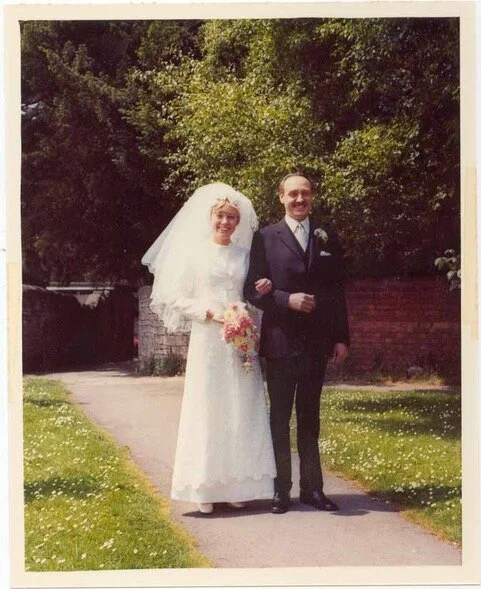WßD ~ Chapter 31 ~ Harry Marshall Senior (Henry Alfred Marshall) ~ 2/5th Btn Gloucestershire Regiment PART TWO

Windsor Street Days
Chapter Thirty-One | Harry Marshall Senior (Henry Alfred Marshall)
PART TWO
Chapter Thirty-One incorporates the extensive research document compiled on my behalf by Bob Brunsdon, Researcher, Guild of Battlefield Guides, and that Research Document is registered as:
The War Service
of
Private 240925 Henry Alfred Marshall
of the
2/5th Battalion,
Gloucestershire Regiment
Page 4
The Gloucestershire Regiment’s origins can be traced back to a Regiment raised by Colonel John Gibson in 1694 at Portsmouth and was named ‘Gibson’s Regiment of Foot’ after the Colonel. In 1697 the Regiment sailed to Newfoundland to protect British settlers from the French and then went on to serve during The War of Spanish succession (1701–1714).
In 1751 the Regimental naming system was simplified with each Regiment assigned a grant number, therefore becoming the 28th Regiment of Foot. In 1782 all British Regiments without royal titles were awarded county titles in order to aid recruitment and the 28th became the 28th (North Gloucestershire) Regiment of Foot. It went on to serve during The French Revolutionary War (1792–1802) and fought at the Battle of Alexandria in 1801. At this battle it gained the unique honour of wearing a badge on both the front and back of the headdress, due to an action when the regiment simultaneously propelled French attacks from the front and the rear. The 28th also served throughout the Peninsula War (1808–1814) including the battles of Talavera, Albuhera and Vittoria as well as the Hundred Days Campaign, the battles of Quatre Bras and Waterloo. In 1881, the 28th merged with the 61st (South Gloucestershire) Regiment of Foot as part of the Childers Reforms, to form the Gloucestershire Regiment. The Childers Reforms reconstructed the British army’s infantry regiments into a network of multi-battalion regiments, each having two regular and two militia battalions.
By the outbreak of World War I, the Gloucestershire Regiment had three Territorial Force (TF) battalions: the 4th (City of Bristol) Battalion, the 5th Battalion, based at Gloucester, and the 6th Battalion also based at Bristol. The TF was created in 1908 as a form of part-time volunteer soldiering. Its original purpose was to provide a force for home defence and men we're not obliged to serve overseas (until 1916) although they undertook to serve full-time (to be ‘embodied’) in the event of general mobilisation. When TF troops agreed to oversee service, they signed the Imperial service Obligation and it then became necessary to separate the home service men from those who had undertaken to serve overseas, with the intention of forming reserves made up of those who had not so volunteered. Those men that did not agree were separated out into Home Service or Second Line units. Hence, each TF battalion split into two, forming the 1/4th, 2/4th; 1/5th, 2/5th and 1/6th, 2/6th Battalions.
The 2/5th Battalion formed part of the 2nd South Midland Brigade, 2nd Division in January 1915 and was based at Northampton. In April 1915 it moved to Chelmsford and onto Parkhouse Camp (Tidworth) in February 1916. By the time it proceeded overseas in May 1916, it had become part of 184 Brigade in the 61st Division.
Defending Front and Rear Simultaneous Assaults
Cap Badges (front and back) of the Gloucestershire Regiment
Emblem of the 61st Division
This Cigarette Card shows the emblem of the 61st Division (worn on the upper arm)
Unfinished Pages 5-60 are being transcribed.
KTW
23 April 2024
All Rights Reserved
LIVERPOOL
© 2024 Kenneth Thomas Webb
Last published 6 February 2023
Ken Webb is a writer and proofreader. His website, kennwebb.com, showcases his work as a writer, blogger and podcaster, resting on his successive careers as a police officer, progressing to a junior lawyer in succession and trusts as a Fellow of the Institute of Legal Executives, a retired officer with the Royal Air Force Volunteer Reserve, and latterly, for three years, the owner and editor of two lifestyle magazines in Liverpool.
He also just handed over a successful two year chairmanship in Gloucestershire with Cheltenham Regency Probus.
Pandemic aside, he spends his time equally between his city, Liverpool, and the county of his birth, Gloucestershire.
In this fast-paced present age, proof-reading is essential. And this skill also occasionally leads to copy-editing writers’ manuscripts for submission to publishers and also student and post graduate dissertations.








